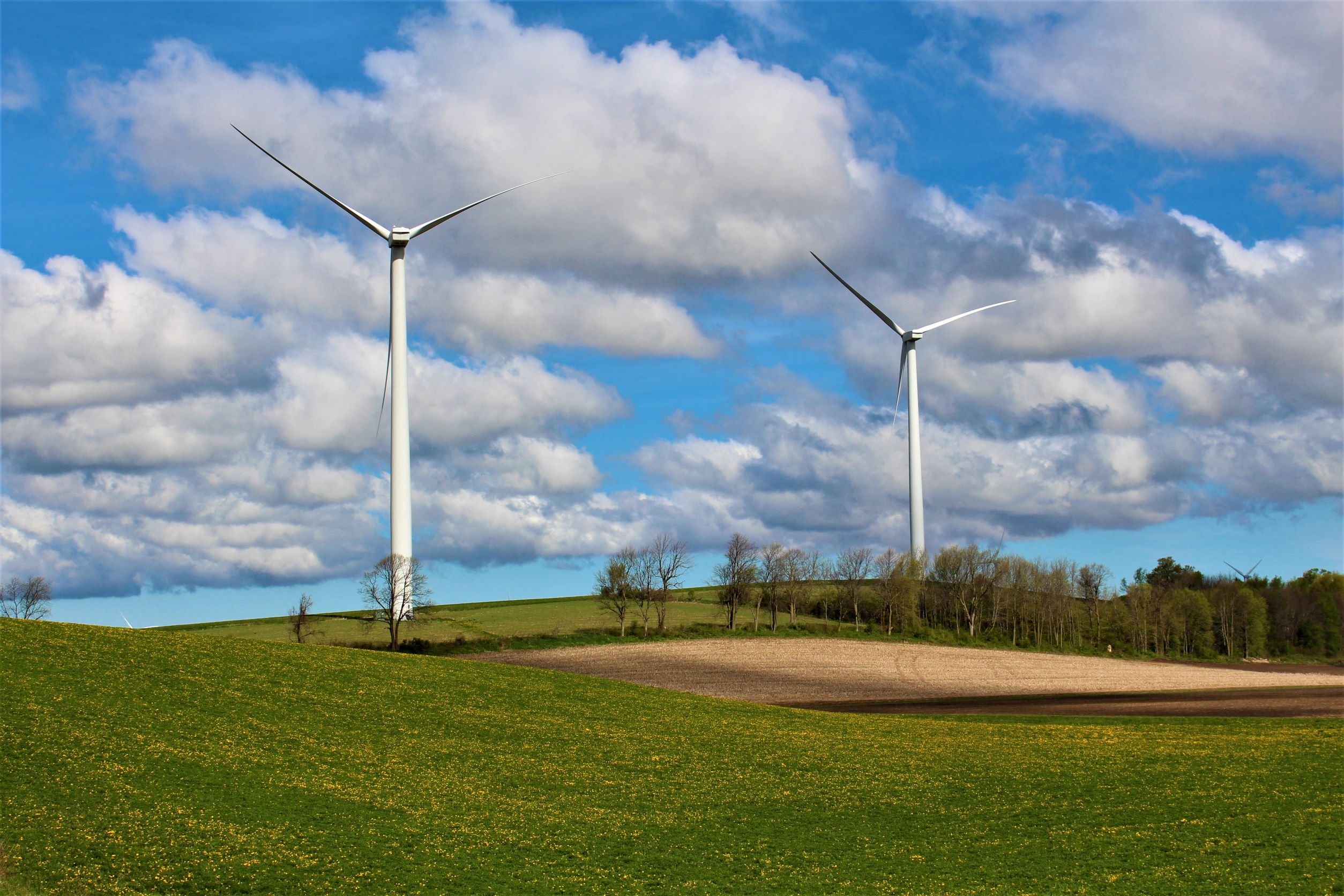Notification Requirements and Construction Recommendations
Agricultural impact statements are required when public utility companies proposing to construct wind farms and solar arrays might use eminent domain to acquire an interest in agricultural land. However, in Wisconsin, wind farms and solar arrays are often constructed by private companies that can only acquire property from willing sellers. These projects do not require an agricultural impact statement.
Regardless of whether wind farm facilities are constructed by a public utility or a private company, there are Wisconsin Department of Agriculture, Trade and Consumer Protection (DATCP) notification requirements even if a formal agricultural impact statement is not required. Wind turbines, access roads, and temporary work spaces such as laydown yards and crane paths can negatively impact agricultural operations if precautions are not taken. Below is a list of DATCP recommendations to minimize these impacts and preserve crop productivity.
DATCP Notification Requirements
Potential wind energy system owners must notify DATCP at least 90 days before filing an application with a county, township, city, or village (Wis. Admin. Code PSC § 128.105). The written notice shall include a description of the project, a project map, contact information for the owner, and a list of all potential permits or approvals the owner anticipates needing for the wind energy system. Mail or email the notice to DATCP at:
Agricultural Impact Statement Program
P.O. Box 8911
Madison, WI 53708-8911
Construction Recommendations
Wind developers should always work closely with farmers to site wind turbines, access roads, and temporary work spaces in order to minimize impacts to farm operations. To reduce the impact on farmland, potential wind farm developers should do all of the following that apply:
-
Verify with landowners that the location of wind turbines and access roads do not create small, irregularly-shaped, or isolated fields that are inaccessible or difficult to farm due to size, shape, or location.
- Work with landowners to determine where existing drainage improvements, farming infrastructure, property access, fencing, and other facilities are located so impacts to these facilities can be avoided or minimized during construction.
- Minimize the use and width of access roads and temporary crane paths through farmland.
- Build adequate fencing to keep livestock away from the construction area, where needed.
- Protect the topsoil by:
- Avoiding mixing topsoil layers with subsoils.
- Removing topsoil before excavating or grading.
- Segregating topsoil from other excavated material.
- Storing and stabilizing topsoil so it does not erode or mix with subsoil.
- Returning topsoil to original levels of compaction.
- Bury cables in farmland at least four feet deep. In areas with shallow bedrock, bury cables at least two feet deep.
- Verify that after construction is completed, access roads are level or nearly level with the surrounding field so farm equipment can cross the road easily.
- Install culverts and water bars where needed to maintain natural drainage flows.
- Remove all construction debris including metal objects, erosion controls, and excess concrete from the site. Do not leave or bury debris.
- Repair any damage caused by developer activities as soon as possible.